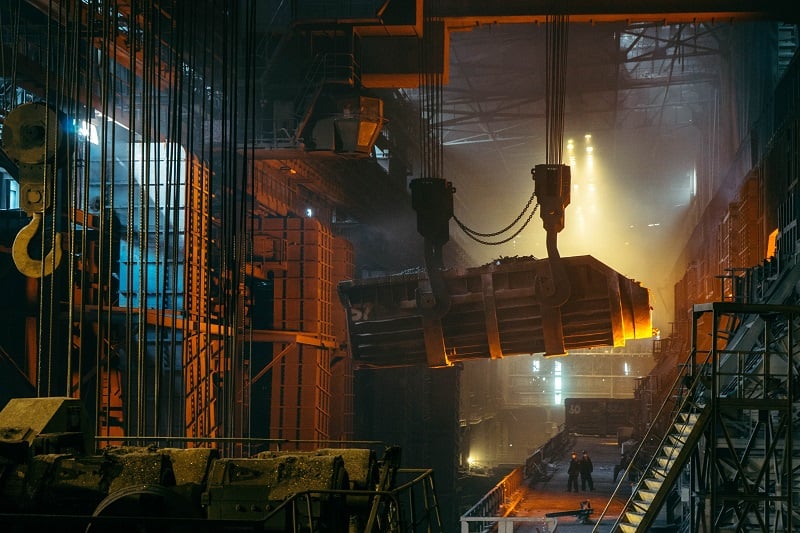
Callum Provan
Content Strategist
This resource aims to help investors engage with steel purchasers to encourage them to pursue low emissions steel procurement, sending demand signals to steel producers. It enables benchmarking of targets against a 1.5°C pathway.
Written in consultation with investors, steel purchasers and steel producing companies, the framework outlines a series of questions investors can ask steel purchasers on their net zero strategies.
These include current steel usage, purchasing mix and emissions intensity, future targets, and potential barriers to low emissions steel. It also suggests that steel purchasers set public targets for reducing emissions intensity with a sliding scale approach, increasing ambition over time.
“This framework will help investors to better understand the nuances of steel purchaser targets,” explained Laura Hillis, Director of Climate and Environment at the Church of England Pensions Board and member of the IIGCC investor working group:
“Are they aligned to a 1.5°C pathway? If we are to meet the objectives of the Paris Agreement, then decarbonisation has to happen right across the value chain.”
The industry is responsible for around 7% of global energy sector CO2 emissions (International Energy Agency).
Download: Steel Purchaser Framework
Decarbonising steel
Steel is one of the most widely used materials globally and demand is set to increase in the decades ahead. The industry is responsible for around 7% of global energy sector CO2 emissions, according to the International Energy Agency.
As a result, an increasing number of companies connected to the production or use of steel are setting climate ambitions and pursuing actions that support the transition to a net zero world. This framework will support investors in assessing the credibility of those targets.
The framework builds on five years of investor engagement with the industry through collaborative initiatives such as Climate Action 100+, led in Europe by IIGCC. In 2021 researchers for the group set out recommendations for investors engaging with steel producers to help reduce emissions.
These included increasing the proportion of steel produced by the ‘scrap-Electric Air Furnace (EAF)’ process, enhancing the material efficiency of steel products, improving the energy efficiency of existing production, and increasing investment in ‘direct reduced iron EAF’ capacity, including hydrogen-based fuels, for primary steel making.
Those lower carbon processes are vital to reducing emissions in the sector and inform many of the questions outlined in the framework.
“Understanding the hurdles”
The document builds on the success of existing industry initiatives such as Climate Group’s SteelZero and is consistent with other investor frameworks IIGCC is developing in key purchasing sectors.
“SteelZero was pleased to be involved in the development of the IIGCC Steel Purchaser Framework,” Jen Carson, Head of Industry at Climate Group said, “The alignment of this disclosure framework with the SteelZero commitment is a fantastic example of key civil society stakeholders joining forces to work towards the same aim: the faster transition to a net zero steel industry.”
For investors with assets across the steel value chain, purchaser demand signals for lower carbon products are seen as a vital step in reducing sector emissions overall.
"Steel purchasers with net zero targets will inevitably have to decarbonise their supply."
Patrick Peura, ESG Engagement Manager at Allianz and co-lead of the IIGCC working group, outlined the importance of examining company transition plans across the buying cycle: “The science is clear, all sectors must transition to net zero, including the hard to abate sectors like steel. This also means that steel purchasers with net zero targets will inevitably have to decarbonise their supply.
“To execute our own portfolio strategies, investors require consistent disclosures to understand how decarbonising steel supply fits within portfolio companies’ decarbonisation goals.”
The framework lays out the details the working group agreed necessary to assess steel purchasers, Patrick explained, as well as providing a foundation for dialogue with companies across the value chain.
“This includes understanding the hurdles that companies are facing in producing and procuring low carbon steel in line with the scientific imperative.”
The key to change
For Siemens Gamesa Renewable Energy S.A., a world leader in offshore and onshore wind and a significant steel purchaser, decarbonising the supply chain is already a critical part of its strategy.
"Customers are increasingly interested in greener solutions, but not so much yet investors.”
“Over the past three or four years this topic has rapidly accelerated,” Maximillian Schnippering, the company’s Head of Sustainability said: “Scope 3 covers more than 95% of our emissions and active management of these emissions is one of our key priorities. In addition, customers are increasingly interested in greener solutions, but not so much yet investors.”
Siemens Gamesa contributed to the framework and has already implemented many of the recommendations in its operations.
The company’s own procurement requirements are complex. The nacelle of a turbine, which houses the components that transform the wind’s kinetic energy into mechanical energy to generate electricity, requires almost the same amount of steel as the turbine tower itself, split across hundreds of products.
Addressing this challenge Maximillian pointed to a new project, The Greener Tower, which represents a turbine tower emissions reduction of more than 60% using lower emission steel.
This is a significant step forward and innovation which could benefit the industry as a whole, but Maximillian warned that the market for these materials is constrained.
The company hopes that initiatives such as the Steel Purchasers Framework will send signals to producers to increase the supply of these lower emission alternatives: “Investors and finance markets are a key accelerator to change companies.”
Download: Steel Purchaser Framework
If you’d like to take part in our working groups and be the first to see insights and analysis, why not speak to our investor relations manager today to find out more about becoming a part of IIGCC.